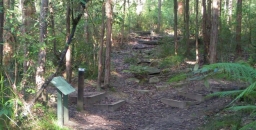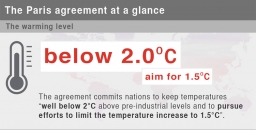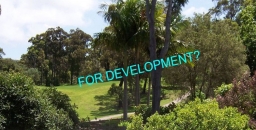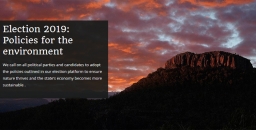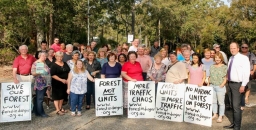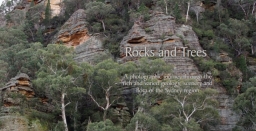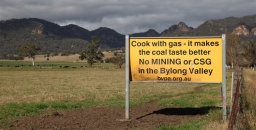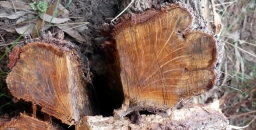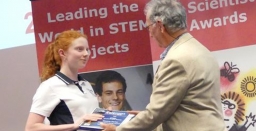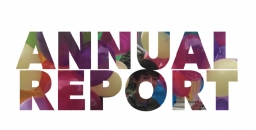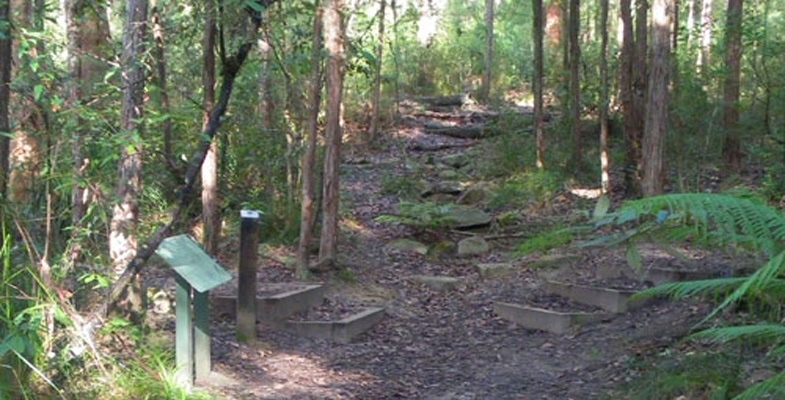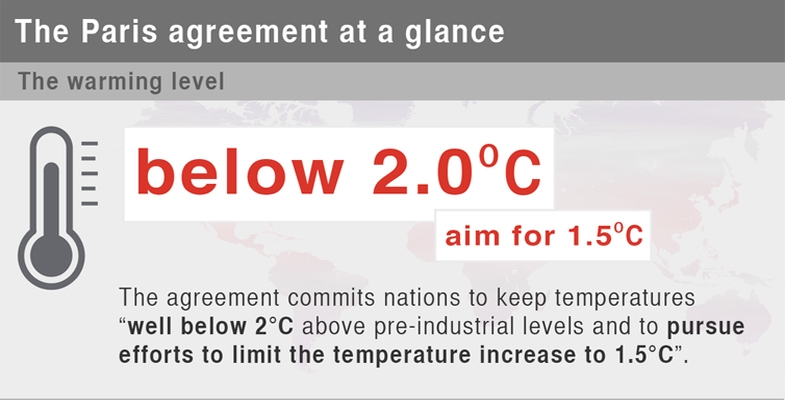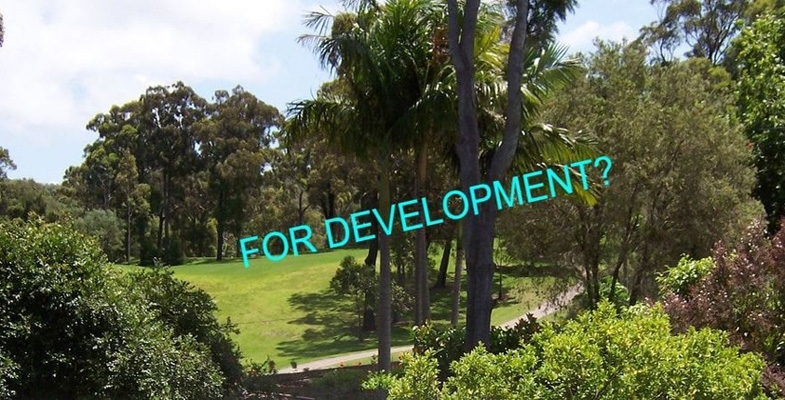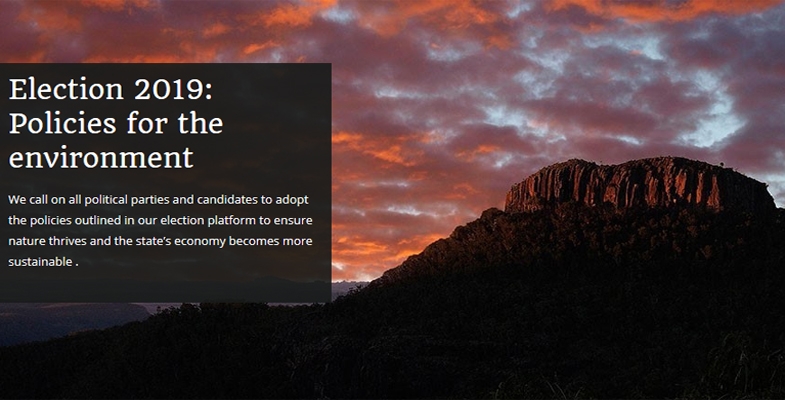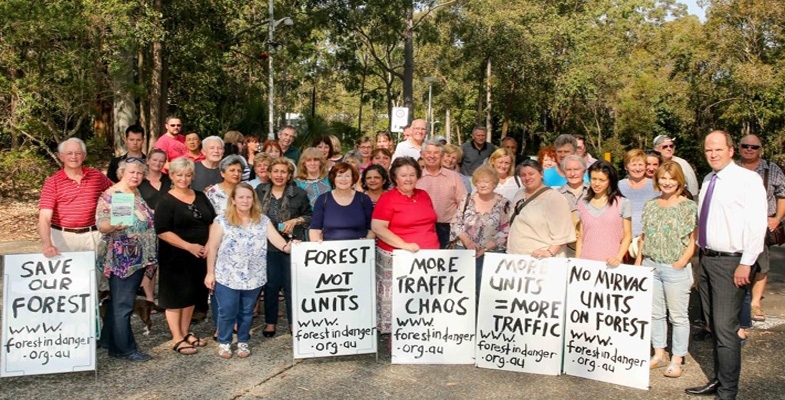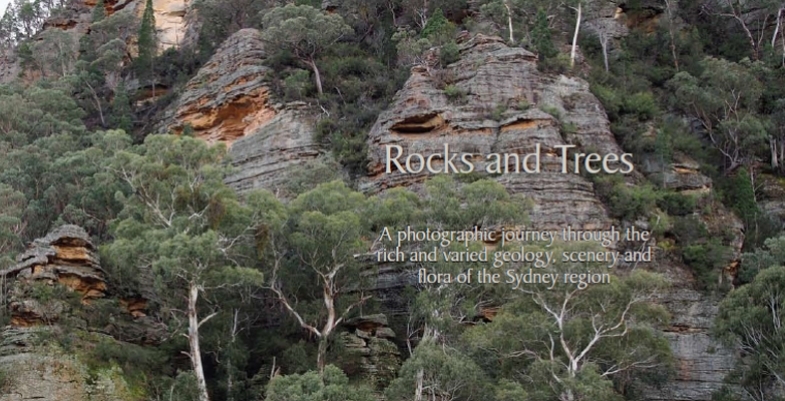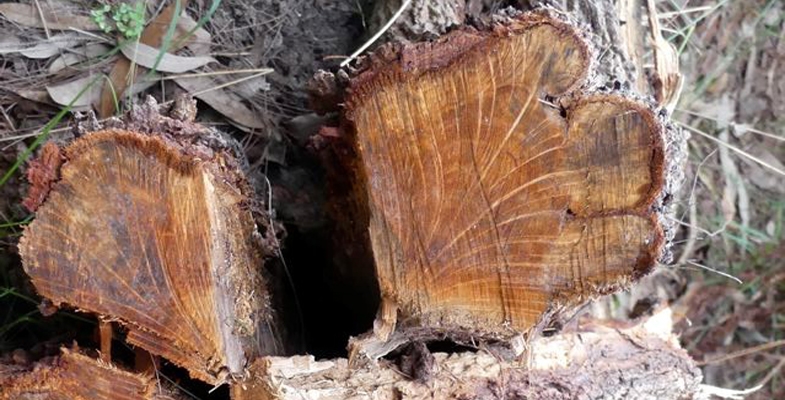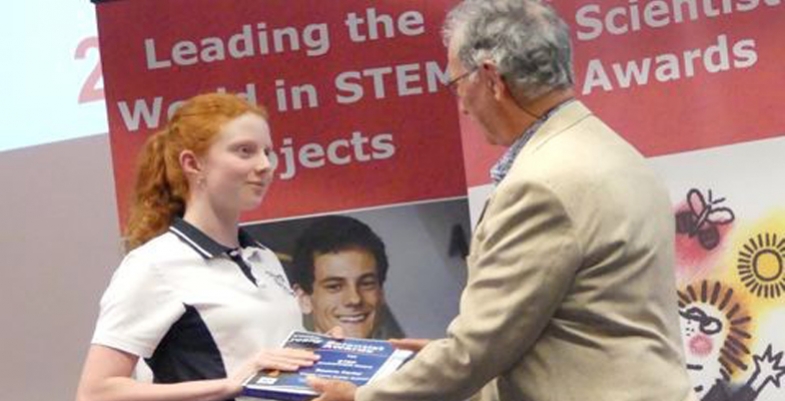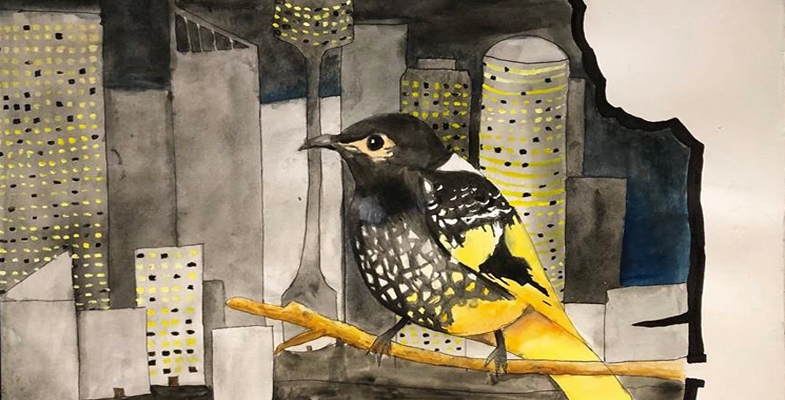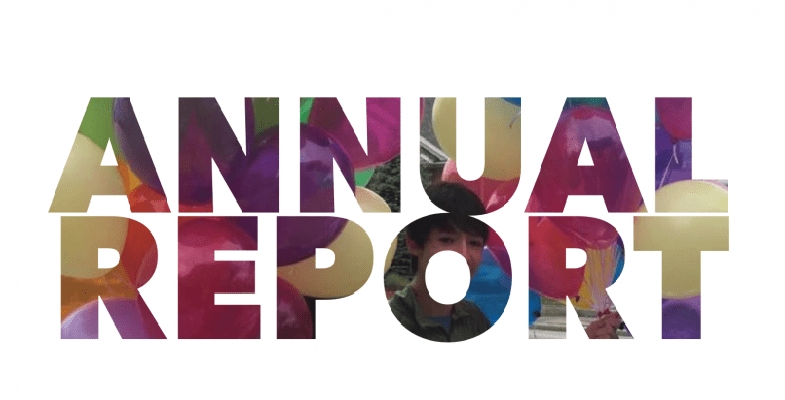STEP Matters 198
- Default
- Title
- Date
- Random
- We have conducted two introduction to bushland walks this year, one in Sheldon Forest/Rofe Park and the other along the…Read More
- STEP is one of a group of environmental organisations that has got together to write a position paper on the…Read More
- The speaker at STEP’s AGM on 30 October was Lesley Hughes, Distinguished Professor of Biology from Macquarie University, who has…Read More
- We recently reported on the application for development on Bayview Golf Course for seniors housing units in an area that…Read More
- In recent months there have been several more bad policy decisions by the NSW government that go against scientific common…Read More
- Issues 193 and 194 of STEP Matters give a rundown of the convoluted application process by the Hills Council through…Read More
- The NSW government wants to bulldoze a large tract of community land around Flat Rock Drive to construct the Northern…Read More
- Such a simple title for such a comprehensive book – the subtitle ‘A photographic journey through the rich and varied geology,…Read More
- This is not a recent issue. The process of approval of this mine application by Korea Electric Power Company (KEPCO)…Read More
- The names of many of our native trees were taken from perceived resemblances of their timbers to those of traditional…Read More
- STEP has been giving a Young Scientist prize at the annual awards every year since 2001. During this period the…Read More
- This year 2749 children participated in the Children’s Threatened Species Art Competition. There were 2397 entries and over 100 schools…Read More
- In 2018 STEP celebrated our 40th year of activity with a party at Lane Cove National Park and the publication…Read More
Introductory Bush Walks are Popular
We have conducted two introduction to bushland walks this year, one in Sheldon Forest/Rofe Park and the other along the STEP Track. They have been well received. Peter Clarke has given interesting explanations of the ecological features of our local bushland and the importance of preserving this biodiversity. We plan on running these walks every couple of months and extend them, not far away, into the Hornsby area.
Powerful Owl Coalition
STEP is one of a group of environmental organisations that has got together to write a position paper on the habitat needs of the Powerful Owl. This iconic bird is a keystone species for maintaining ecological balance in our bushland.
We now will be recruiting other groups to help disseminate the report to all areas where Powerful Owls live.
New IPCC Report Highlights the Urgent Need for Action to Reduce Carbon Emissions
The speaker at STEP’s AGM on 30 October was Lesley Hughes, Distinguished Professor of Biology from Macquarie University, who has been studying the impacts of climate change on ecosystems for many years. She has been a leading contributor to reports produced by several expert bodies such as the Intergovernmental Panel on Climate Change (IPCC) and Australia’s Climate Commission. She gave a stark outline of the changes to ecosystems that have been happening and the prospects in years to come under the possible scenarios for temperature increases.
The global body assessing the issue of climate change is the IPCC. Their reports are published after rigorous analysis of thousands of scientific reports.
Early in October the IPCC released a special report commissioned at the breakthrough 2015 summit that brokered the Paris climate agreement. It sets out the key differences between the Paris agreement’s two contrasting goals: to limit the increase in global temperatures over pre-industrial levels (mid-nineteenth century) to ‘well below’ 2°C, and to ‘pursue efforts’ to limit warming to 1.5°C. The agreement also aimed to increase the capacity of countries to deal with the impacts of climate change and provide finance for measures to reduce greenhouse gas emissions.
Emissions Reduction Commitments
The 196 countries signing the agreement made statements of commitments to reduce emissions by 2030. However the national pledges that have been made are not enough to remain within a 3°C temperature limit let alone a 2°C limit. They are not even enforceable. The only result of not meeting the commitment is to be named and shamed.
Australia’s commitment was a reduction of 26 to 28% below 2005 levels. We were making progress towards that goal when the carbon tax was introduced but we have gone backwards since 2014 with a reduction of only 11% by 2017. With current policies we haven’t a hope of meeting the goal.
What is the Expected Impact of 1.5°C of Warming?
Although the Paris agreement aims to hold global warming as close to 1.5°C as possible, that doesn’t mean it is a ‘safe’ level. In 2017 the increase in global average temperatures reached 1°C. Communities and ecosystems have already suffered significant impacts from extreme weather events and drought. If the planet continues to warm at the current rate of 0.2°C per decade, we will reach 1.5°C of warming by around 2040.
But there is a lag between the timing of carbon emissions and temperature increases. The IPCC uses the concept of a carbon budget, the projection of the quantity of emissions that can occur in order to limit warming to a certain level. At current emissions rates, within the next 10 to 14 years there is a two-thirds chance we will have used up our entire carbon budget for keeping to 1.5°C. It is inevitable that temperatures will increase by more than 1.5°C unless policies are implemented now to reduce emissions drastically as quickly as possible.
What Difference does 0.5°C Make?
Impacts on both human and natural systems would be very different at 1.5°C rather than 2°C of warming. The report tries to quantify the differences to give a tangible scale to the information. For example:
- The proportion of the global population exposed to water stress could be 50% lower than at 2°C. Food scarcity would be less of a problem and hundreds of millions fewer people, particularly in poor countries, would be at risk of climate-related poverty.
- At 2°C extremely hot days such as those experienced in the northern hemisphere this summer, would become more severe and common, increasing heat-related deaths and causing more forest fires. Extreme heatwaves will be experienced by 14% of the world's population at least once every five years at 1.5°C but that figure rises to more than a third of the planet if temperatures rise to 2°C.
- But the greatest difference would be to nature. Insects, which are vital for pollination of crops, and plants are almost twice as likely to lose half their habitat at 2°C compared with 1.5°C.
- More than 10% of corals have a chance of surviving if the lower target is reached but 99% could be lost at 2°C, a disaster for the Great Barrier Reef. It is notable that the bleaching events in the last two years have killed about 50% of the coral in the Great Barrier Reef.
- Sea-level rise would be 10 cm higher by 2100 with the extra 0.5°C. That doesn’t sound much but it would affect 10 million more people by 2100 and the number affected would increase substantially in the following centuries due to locked-in ice melt.
- Marine fisheries would lose 3 million tonnes at 2°C, twice the decline at 1.5°C.
- The Arctic has been warming two to three times faster than the world average. Sea ice-free summers would come once every 100 years at 1.5°C, but every 10 years with half a degree more of global warming leading to greater habitat losses for polar bears, whales, seals and sea birds.
Fundamentally the message is that it is worth the effort to implement the measures necessary to keep warming below 1.5°C.
Can we Limit Warming to 1.5°C
Put simply, it is not impossible that global warming could be limited to 1.5°C. But achieving this will be profoundly challenging. If we are to limit warming to 1.5°C, we must reduce carbon dioxide, methane and other greenhouse gas emissions by 45% by 2030, reaching near-zero by around 2050. Most economists say putting a price on emissions is the most efficient way to do this.
By 2050, 70 to 85% of electricity globally will need to be supplied by renewables. Lesley Hughes pointed out that 90% of current coal reserves and 85% of gas reserves will have to stay in the ground. Transport will need to convert to electric vehicles and much greater use of public transport. Sustainable agriculture is a puzzle to be solved.
Reducing commercial, manufacturing and household energy demand is an important part of the equation. Reducing food waste, improving the efficiency of food production, and choosing foods and goods with lower emissions and land use requirements will contribute significantly.
Carbon dioxide removal technology will also be needed to remove greenhouse gases from the atmosphere. But the IPCC’s report warns that relying too heavily on this technology would be a major risk as it has not been used on such a large scale before. Carbon dioxide removal is an extra step to keep warming to 1.5°C, not an excuse to keep emitting greenhouse gases.
Taking such action as soon as possible will be hugely beneficial. The earlier we start, the more time we have to reach net zero emissions. Acting early will mean a smoother transition and less net cost overall. Delay will lead to more haste, higher costs, and a harder landing.
Australia Government’s Response
Australia does not have a credible emissions reduction policy and they no longer have a body that can provide independent scientific advice on the response to climate change. Lesley Hughes was a member of the Climate Commission that was established by the Gillard government but was abolished by Tony Abbott. It was replaced by the Climate Change Authority that has been progressively stripped of scientific expertise and funding by the current government.
The government has decided to remove any emissions reduction target from the highly fraught energy policy and we still don’t have a remotely credible long term electricity policy. The other major economic sectors that need to reduce emissions, such as transport and manufacturing have been put in the too hard basket. The Emissions Reduction Fund is a farce.
Prime Minister, Scott Morrison (and the mining industry) rejected the findings of the IPCC report that coal-fired electricity must be phased out by 2050. Voters at the recent Wentworth by-election disagreed. The next election is due in 2019. We all need to tell the candidates that we want action now!
Note that there is still a body providing expert advice to the public on climate change. The crowd-funded Climate Council was established in 2013 in response to the Government’s abolition of the Climate Commission. Professor Lesley Hughes is one of this body’s councillors.
Bayview Golf Course Developer Trying Again
We recently reported on the application for development on Bayview Golf Course for seniors housing units in an area that is a core wildlife corridor and habitat for several threatened species such as the Powerful Owl and microbats. The development has been strongly opposed by Northern Beaches Council and local residents.
In August the next application for approval went before the Regional Planning Panel. It was resoundingly knocked back basically because it is over-development. The built form would be incompatible with the existing and desired future character of the area. It would have substantial adverse impact on the biodiversity of the area given that it is mapped as high priority biodiversity conservation land in the Pittwater LEP. Bat ecologist Glenn Hoye stated in a submission that subdued lighting would be required and directed to walkway areas but this would be incompatible with OH&S requirement for seniors housing.
This type of development requires a Site Suitability Certificate before further formulation of a proposal can go ahead. This certificate was provided by the Planning Department back in 2017. A freedom of information application has revealed that internal advice within the department recommended against granting the certificate because the type of development proposed was not consistent with the required zoning.
However the developer is trying again by appealing to the Land and Environment Court.
Unfortunately it is too late to send a letter objecting to the development but you can sign the petition and read more about the issue.
More Bad Decisions by the NSW Government
In recent months there have been several more bad policy decisions by the NSW government that go against scientific common sense. Under this government many environmental protections have been reversed. The election in March 2019 will be critical in turning around this adverse situation. Here is a brief summary of the major recent decisions.
1. Backflip on the Sydney Marine Park Sanctuary Zones Proposal
The only NSW coastal region that currently does not have a marine park is the Hawkesbury Shelf marine bioregion that stretches from Newcastle to the Wollongong coastal waters. A long process of campaigning and consultation has been undertaken on the creation of a park. Finally an announcement was made on consultation on a draft marine park plan. The proposal included fully protected sanctuary (no fishing) zones that covered only 2.4% of the marine area including estuaries and other protected zones that restrict line and spear fishing.
A group of recreational fishers protested vocally blowing the restrictions all out of proportion. The Minister for Primary Industries promptly decided to withdraw the sanctuary zones from the plan. A knee jerk reaction that threw out the window all that scientific consultation and discussion. Evidence shows that sanctuary zones are essential for preserving and restoring the marine estate for future generations.
The draft plan provided limited protections even before the backflip. In addition to the conservation areas covering only limited areas, these zones would allow taking of lobster and abalone. Lobsters are important for controlling the numbers of sea urchins that devour kelp that are a vital source of food for many species. The increase in sea temperatures from climate change is already causing a boom in sea urchin populations.
Consultation on the draft marine park plan closed at the end of September.
2. Raising Warragamba Dam Wall
In the Issue 192 of STEP Matters we described the pointlessness of the claim that raising the Warragamba Dam wall will provide flood protection for the Hawkesbury Nepean Valley. There are five other rivers below Warragamba Dam that flow into the valley. The wall-raising proposal will cause huge damage to the pristine wilderness and wild rivers of the World Heritage Blue Mountains National Park, drown several Aboriginal cultural sites and destroy threatened plants such as a significant proportion of what remains of the critically endangered Camden White Gum Forest and the habitat of the Regent Honeyeater.
An environmental impact and economic assessment has not been done but last month the government passed legislation to change the National Parks Act to allow inundation of the park, a first step to facilitate the proposal. Everybody is saying that the real reason for the plan is to reduce the risk of flooding of all the new homes that the government wants to build in the North West Growth Centre. But that cannot be 100% assured by raising the dam wall. Flood data experts argue that management of the water level in the dam and even using the idle desalination plant would be more effective and less costly.
3. Protection for Feral Horses in Koscuiszko National Park
This issue was covered in STEP Matters, Issue 196. The government is ignoring protests from people concerned about the welfare of the horses as well as the damage they are doing to the sensitive alpine vegetation. The opposition parties have vowed to repeal the legislation if elected. A walk is currently being held from Sydney to Mt Kosciuszko to raise awareness of the issue.
4. Proposal to Revoke the Murray Valley National Park Status
A National MP has presented a private member’s bill in parliament that would delist the Murray Valley National Park. This would open up the area for logging of the river red gums. Only 5.5% of Riverina bioregion is protected compared to the international target of 17% for each region. The bill is unlikely to be debated before the state election but it sets a terrible precedent.
These recent developments are on top of previous bad decisions such as removal of land clearing controls or their replacement with weak offset provisions. 99% of identified koala habitat on private land can now be cleared without restriction. There is already evidence of the predicted increase in land clearing even though the act only came into operation in August 2017. A study commissioned by the NCC and WWF of satellite images of north-western NSW covering the Moree and Collarenebri areas showed that the area cleared in 2017–18 was triple the area in 2016–17.
The NSW government has announced funding for purchasing koala habitat from private landowners and conversion of unproductive state forests to conservation but this is not considered enough to make any difference to the need for secure habitat. A Koala national park is a must.
IBM Site in West Pennant Hills – Another Gateway Application
Issues 193 and 194 of STEP Matters give a rundown of the convoluted application process by the Hills Council through the Gateway process to change zoning and insert site specific conditions that vary the normal development control plan conditions to facilitate the development by Mirvac of the former IBM business site next to Cumberland State Forest.
There have been further iterations of the zoning plan but we cover only the latest application here. The main positive change is the recognition of the high quality bushland by providing for the possibility of an E2 zoning (Environmental Conservation) that does not permit any residential development.
The current development proposal includes construction of 600 dwellings but the zonings will allow further development of the site.
In September the Hills Shire Council has again written to the Department of Planning requesting an amendment to the current Gateway Determination.
 The latest zoning application looks like this.
The latest zoning application looks like this.
The Forest in Danger group has sent a detailed letter to the Department of Planning objecting strongly to the latest application.
They have also requested that those concerned about the Mirvac proposals convey their objections via email.
The main points of objection to the latest proposal are as follows.
- Even though council and Mirvac have both now theoretically agreed to the forest being protected by E2 Environmental Management zoning, thanks to the outcry by supporters, there is still no formal agreement as to who will own the forest or who will pay for its upkeep. It's been over a year since E2 first appeared on plans yet Mirvac still haven't confirmed an owner for the forest. The E2 zone includes the critically endangered Blue Gum High Forest and endangered Sydney Turpentine Iron Bark Forest.
- There is a Powerful Owl nesting site near to the proposed high density residential area (zone R4) but the required ecological assessment has still not be provided. The current documents also do not make it clear that bushfire APZ will be clear of the Owl’s roosting and nesting areas.
- The medium and high density zoned areas have been extended into areas that include a major tributary of Darling Mills Creek that flows into the Parramatta River and the natural forest regrowth area to the north of the site. The maps do not show any dwellings on these areas currently. What is the reason for the extension of these zones if they are not going to be used for development? The E2 zoning should continue to apply to provide a buffer with the Cumberland State Forest.
- It is proposed that the playing fields be covered with synthetic turf but no ecological assessment has been provided on the impact of runoff into the forest and waterways and any risk in the case of bushfire.
- Previous statements were made that Mirvac would provide a community facility in association with the area of open space but this is no longer part of the proposals. A facility will be badly needed for a large development like this that is touted.
- The previous Gateway Determination required a contribution be made towards state public infrastructure because of the extra population from the development being added to the Cherrybrook Planning Precinct. No commitment has been made.
- The department has refused to allow site-specific provisions for this site yet council is asking again to allow lot sizes of only 86 m2. These sites will be only 4 m wide to house a three bedroom home. This will create an undesirable precedent. No urban design analysis has been provided to demonstrate that medium density units within a lot size of only 86 m2 will fulfil the standards of amenity through adequate setbacks, landscaping, solar access and private outdoor space.
Northern Beaches – Not Another Tunnel!
The NSW government wants to bulldoze a large tract of community land around Flat Rock Drive to construct the Northern Beaches tunnel. Another tunnel for private vehicles, but not trains, is crazy. Haven’t they learnt the lesson that the traffic will rapidly expand to clog the new road? We have to get more people into public transport!
Just like West Connex, the construction and operation will come at great environmental cost. They are proposing to use either the baseball diamond area in Bicentennial Reserve on Flat Rock Drive or the Flat Rock Gully bushland on the other side of the Drive.
Both are important open spaces used by many groups in the community. Here are just a few of the known negative impacts of the tunnel construction.
- Around 6 acres of well-used community space will be taken over by tunnel construction.
- Flat Rock Gully is a critical wildlife corridor and is recognised for its biodiversity and as one of the last refuges for our fast disappearing small native bird population. It also provides a habitat for foraging Powerful Owls, Swamp Wallabies, lyrebirds and many other native animals.
- Willoughby City Council and many dedicated volunteers have worked for 25 years to remediate this bushland.
- There is no guarantee that the Flat Rock Gully site will be returned to bushland. The RMS has offered to leave buildings and cleared areas to be used for other purposes.
- The RMS has advised that there will be over 70 truck movements an hour carrying contaminated spoil through already congested local roads and near local schools.
- The tunnel will be dug through toxic fill from the old tip site. The ground is unstable and the tip is known to contain asbestos and other toxic material.
- There will be risks of air, land, noise and water pollution from the tunnel activities to nearby homes and schools and more broadly to the Willoughby district and surrounding areas including Middle Harbour.
See the fact sheet for environmentalists. This site explains how you can act to oppose the proposal. However the consultation period has now closed.
This information comes courtesy of WEPA (Willoughby Environment Protection Association)
Book Review – Sydney’s Rocks and Trees
Such a simple title for such a comprehensive book – the subtitle ‘A photographic journey through the rich and varied geology, scenery and flora of the Sydney region’ elaborates on the topic of this lavishly illustrated volume.
More precisely, the work focuses on the Triassic sedimentary rocks of the Sydney Basin and younger volcanic and sedimentary deposits (including Jurassic diatremes and intrusions, Paleogene and Neogene basalt flows, and Cenozoic unconsolidated sediments) and the diverse flora these lithologies support.
Not since the compilation by Herbert and Helby (1980) – now out of print – has such a useful guide to the rocks of the entire Sydney Basin been published. The two publications are entirely complementary, with only the stratigraphic nomenclature for the Triassic succession and the geology of the younger rocks being common to both. In wanting to keep his book to a manageable size, Rocks and Trees barely touches on the underlying Sydney Basin Permian rocks that are covered in detail by Herbert and Helby (1980), whereas the geobotanical aspects explored in Rocks and Trees were never considered in the earlier publication.
A further obvious distinguishing feature is the prolific use of colour throughout Rocks and Trees, in which almost every page carries at least one colour image, be it of rocks, trees, flowers or even a butterfly. All photographs bear informative captions relating the landforms to the stratigraphy or intrusive unit, or the flora to the lithology. With the floral communities and the rocks they grow on being so extensively depicted in photographs taken by the author over 14 years, Rocks and Trees has definite appeal to anyone interested in geology or botany, or just keen on bushwalking.
John Martyn is a trained geologist, with 40 years fieldwork experience around the world. His observation of the wildflowers in Western Australia in full bloom sharpened his initial interest in the relationship between botany and geology. After moving to Sydney his love of bushwalking developed an appreciation of the differences in distribution of flora depending on their geological substrates.
There is clearly a need for such a book; as the author points out in the Introduction (p 7), botanists (particularly those investigating the Greater Blue Mountains World Heritage Area, which was nominated for World Heritage status on the basis of its botany, not – surprisingly – its geology and geomorphology) have identified and formally named floral communities such as Blue Mountains Shale Cap Forest and Shale Sandstone Transition Forest, recognising their links to the geological substrate (but not the precise geological formation). John also mentions the unfortunate misuse (not only by botanists) of informal terms such as ‘Wianamatta Shale’ that has crept into the literature in some popular guidebooks.
Dr Martyn opens his account of the geology of the Sydney Basin by firstly considering the geomorphology in a chapter on Landscapes and Panoramas. Several panoramic images are annotated with the names of prominent geographic features to help orientate the reader, and the location and viewing direction of many of these scenes are plotted on a simplified geological map of the Sydney Basin (p 27). Then follows a Geological Overview, including a brief discourse on the tectonic and structural history of the basin, before the main section (amounting to roughly half of the book) which progresses up-section through the Narrabeen Group, Hawkesbury Sandstone and Wianamatta Group.
The chapter on Jurassic igneous intrusions and diatremes follows, covering dykes, sills, laccoliths and various alkaline intrusions such as Mt Gibraltar, before documenting several of the better known diatremes. New distribution maps, adapted from the Sydney Basin 1:500,000 Geological Map compiled and published by the Geological Survey of NSW more than 50 years ago, accompany each of these chapters. Cenozoic volcanic activity at Mt Tomah and Mt Banks, Mt Wilson and Mt Hay, Nullo Mountain and Robertson Nature Reserve is dealt with in the subsequent chapter.
The next section focuses on the Lapstone Structural Complex and its geomorphological expression, and illustrates how the monoclinal warping and associated faulting has caused the development of lakes and swamps that support their own distinctive vegetation. Then follows a chapter (covering 40 pages) looking in some detail at Cenozoic sands, clays, gravels and laterites in the area of the Cumberland Plain (bounded by the Hawkesbury-Nepean catchment to the west and north) and extending to coastal dunes on the central coast, laterites at Long Reef and the Royal National Park south of Sydney.
And if by this stage the reader craves still more examples of the close bonds between rocks and plants, the illustrated part of the book concludes with a chapter on Rock-loving plants, featuring some exquisite rock orchids.
A Glossary of geological terms, listing of References and an Index provide the finishing touches.
I can thoroughly recommend this book. The text is engaging to those well-versed in geology and botany, but will also be readily understood by readers with only a rudimentary knowledge of rocks and trees. Though I have lived in the Sydney Basin for most of my life, and thought that I was reasonably well acquainted with the geology of the region, I was definitely impressed by the amount of new information that I gained in reading this volume, especially from the many photos of outcrops in places that I have not visited. Identifications of the trees, native shrubs and their flowers are an added bonus.
Although the A4 page size of the volume and its weight means that it is not the sort of book that can be readily carried around in a backpack or pocket, it can certainly be taken in the car to the field. Rocks and Trees is not a coffee table showpiece but rather a practical guide to understanding the relationship of flora to geology. It should certainly occupy a place on the bookshelf of any geologist (or botanist for that matter) living in the Sydney Basin or who visits the area regularly or occasionally.
John Martyn is an accomplished photographer and experienced author, having self-published several books previously (including Sydney’s Natural World, Field Guide to the Bushland of the Lane Cove Valley, and Understanding the Weather) through STEP Inc., a local community-based group concerned with (amongst other things) environmental education and the preservation of the natural habitat of Sydney’s upper North Shore. All his books are meticulously edited (by fellow members of STEP) and beautifully produced on high quality paper, and Rocks and Trees is no exception.
The price is another pleasant surprise: $60 plus postage. STEP members save 30%, reducing the cost to just $42. I understand the print run is not very large (certainly not in normal commercial quantities) so it would be worthwhile investing in this book now before it sells out. Order your copy now!
Reference
Herbert, C. and Helby, R. (eds) 1980. A Guide to the Sydney Basin. Geological Survey of New South Wales Bulletin 26, 603 pp.
Reviewed by Ian Percival (Pymble, NSW)
Help Save the Bylong Valley from a New Coal Mine
This is not a recent issue. The process of approval of this mine application by Korea Electric Power Company (KEPCO) started three years ago but now it is coming to the crunch decision time.
The development application and environmental impact statement were placed on public exhibition in 2015 and received 364 submissions, of which 336 opposed the project. It was referred to the then Planning Assessment Commission for a merit review, which raised concerns about the mine's heritage impacts on Tarwyn Park – a farm internationally recognised as the site where natural sequence farming methodologies were developed. The property was developed by environmental pioneer, Peter Andrews, but KEPCO purchased this property and many others along with the school, general store. The review also found uncertainty and incomplete information about the risks and benefits of the project.
The NSW Department of Planning and Environment has now completed its final assessment report of the current plans and said the development is approvable, subject to stringent conditions. Following advice from the state's Heritage Council, the department said it placed appropriate conditions on the development to protect the heritage of Tarwyn Park, including a prohibition on open-cut mining on the property. But the mine will go right up to the boundary of the property! Who will want to live there and look after the land?
The matter has been referred to the Independent Planning Commission which will hold a public hearing this month before making its final determination. As the former Planning Assessment Commission has already held a public hearing in relation to the project, merit appeal rights in relation to any future determination by the renamed Independent Planning Commission have been extinguished.
This mine should not proceed because:
- The entire landscape of the Bylong Valley has state heritage significance, as identified by the expert heritage report by Hector Abrahams Architects.
- The mine will irreparably damage these values, and also have broader heritage impacts because it adjoins the Greater Blue Mountains World Heritage Area.
- This mine will directly open cut strategic agricultural land which cannot be replaced. All such land should be off-limits to coal mining.
- The mine will destroy areas that have been mapped as part of the Critical Industry Cluster for the equine industry.
- This mine will devastate the Bylong River and its alluvial aquifer. Government experts warned internally the river could ‘run dry’ if the mine goes ahead.
In any case there should be no new coal mines. As explained in another article, the IPCC has released new warnings that global warming needs to be limited to 1.5°C and fossil fuels should be phased out quickly to avoid catastrophic change.
Oaks, Sheoaks and Medullary Rays
The names of many of our native trees were taken from perceived resemblances of their timbers to those of traditional Northern Hemisphere species like oak, and tropical hardwoods such as mahogany, something for which we can no doubt thank early settlers. On many occasions the common names mean little botanically but reflect species from unrelated plant families or with no close relatives among Australian flora. Let's take a classic example.
Red Cedar Toona ciliata is named after North American Western Red Cedar, or more correctly ‘Redcedar’ Thuja plicata of innumerable window frames and architraves. Our native version isn't even a conifer let alone a member of family Cupressaceae. T. ciliata, surprisingly, is actually in the Mahogany family Meliaceae and of course it's a hardwood.
From here we could move the article on to the various trees Australians call mahogany, with many examples, but what about our various ‘oaks’ such as Tasmanian ‘Tassie’ Oak, Silky Oak, Northern Silky Oak and the various ‘sheoaks’ ‘she oaks’ and ‘bull oaks’.
The term ‘Tassie oak’ generally embraces three species of Eucalyptus – E. regnans, E. obliqua and E. delegatensis all of which have hard, light coloured timbers in shades within oak's range, though they rarely show the classic feature of true Northern Hemisphere oak of the genus Quercus – that of medullary rays.
If you are unsure what a medullary ray is have a look at any oak furniture you may have. Or failing that, next time you are on a bushwalk and a Black Sheoak or Forest Oak has been blown down across a trail (a common event) and sawn up, look closely at the cut ends. The picture below is of just such a tree and you can clearly see striking, curvilinear radial streaks that cut across the concentric growth ring pattern. For the living tree these carried out a function of conducting water across the grain, but they also mature to an attractive and sought after feature of polished timber in cabinet making and wood turning.
As well as in members of family Casuarinaceae, medullary rays are typically also found in Proteaceae species, notably of course Silky Oak Grevillea robusta and Northern Silky Oak Cardwellia sublimis. We are perhaps lucky that the numerous beautiful plants of this family do not generally grow to timber size except to provide an occasional rare source for specialist ornate inlays and veneers.
You may own items of true oak furniture, or you may visit a pub, restaurant or antique shop or watch Antiques Roadshow, featuring traditional-style oak furniture, and see the rays expressed as graceful, wavy, lenticular patterns. But our very own silky oaks and sheoaks show these beautifully and have also been widely used historically, turning up in such settings as traditional church pews and well-crafted furniture and inlays. And although darker than real oak, you'll spot them immediately from their medullary flecks and patterns.
Alternative insight into the naming of tree species by John Martyn
2018 Young Scientist Award
STEP has been giving a Young Scientist prize at the annual awards every year since 2001. During this period the event has grown and grown, now with prizes totaling more than $30,000.00. All school years are covered, from K to year 12, and it was delightful to see some of the younger winners bouncing up onto the stage, and to learn how serious their projects were.
One highlight for us was the ongoing success of past two-times STEP winner Jade Moxey, now a Young Scientist ‘insider’ and a member of the stage party this year. She's also now a first year science student at Canberra Uni.
STEP gets to judge a selection of the order of six to eight entries picked by the board from the environmental side of the science projects. These usually cover a range of topics, but plastic bags and plastic pollution figured prominently this year. There were also bushland related ones, which for the past two years have featured Lake Parramatta Reserve, that precious little surviving enclave of sandstone flora that just happens to have several schools nearby. This year these schools generated a project on cicadas and another based on Powerful Owl sightings.
While STEP naturally welcomes the bushland projects, neither of this year's entries was a leader and our judgment favoured a neat little one on microplastic pollution of beach sand by a year 6 student. She is Beatrix Farley, from Castle Cove Public School, and the systematic nature of her collecting and observations, taken from beaches south of Sydney to as far north as Cape York Peninsula, plus her excellent presentation, won the day. Her results were to some degree counterintuitive too, the most polluted sands being collected from remote Cape York beaches, in her view related to the impact on that coastline of the South Equatorial Current. Her entry won her three other prizes and she was featured on stage as one of a small group of ‘primary scientists’.
There were, I feel, some minor downsides affecting our entries. Some written presentations were below par in being too long-winded, convoluted and slow to get to the point. One of the bushland related entries was peppered with spelling mistakes that could have easily been corrected by any spell checker. Such flaws will naturally cast a shadow over an otherwise well thought out project.
Threatened Species Children’s Art Competition
This year 2749 children participated in the Children’s Threatened Species Art Competition. There were 2397 entries and over 100 schools and programs got involved. The organisers were delighted by the quality of the children's work, their concern for our threatened species, and their desire to make a difference.
The student's challenge is to research and create an artwork on one of the over 1000 threatened species in NSW and the ACT. The finalists’ works can be viewed on Facebook.
The image above expresses the encroaching development on the natural world says it so well for the regent honeyeater. Oscar 11 says:
I was inspired to paint the Regent Honeyeater because I like its bright yellow colours. I have painted it on the last tree in the city. The Regent Honeyeater has been badly affected by land-clearing and is endangered in NSW. At my school we have planted trees for habitat for native small birds.
I noticed that many schools are taking steps like this one to protect habitat for native species. Well done brilliant children and their teachers!
Annual Report for the Year to 30 June 2018
In 2018 STEP celebrated our 40th year of activity with a party at Lane Cove National Park and the publication of a history book written by Graeme Aplin. It was a delightful occasion catching up with several longstanding members such as past presidents Helen Petersen, Yvonne Langshaw, John Burke, Bruno Krockenberger and Barry Tomkinson.
At last year’s AGM an updated version of our constitution was approved. Basically our objectives remain unchanged but have been broadened to acknowledge that we cover more that the Ku-ring-gai area. In brief our objectives are to work for the conservation and proper management of bushland in northern Sydney, to promote participation of members via walks and talks and to promote environmental education.
This annual report gives a brief summary of our activities over the past year.
Committee
With so much development happening in Sydney and other threats to the environment throughout the state of NSW it has been another busy year for the committee in preparing submissions. We have also been very active in our other fields such as education and local walks with some other initiatives described in this report.
I pay tribute to the work of STEP’s committee members who are always willing to take the time to respond to issues as they arise and to implement new ideas.
I also thank some other individuals who have helped with our work, in particular Beverley Gwatkin for her organisation and communication skills, Peter Clarke for leading walks and Gaye Braiding for helping judge the Young Scientist Award.
Individuals who can offer their expertise and time to help with some aspect of our work are very welcome to let us know by contacting a member of the committee.
Publications
This year John Martyn has completed another book, called Rocks and Trees. It is beautiful photographic journey through the rich and varied geology, scenery and flora of the Sydney region. It has been well received in all areas where John has had the opportunity to demonstrate the book.
Our other publications continue to sell well.
Accounts
Our operations incurred a small deficit over the year but we remain in a sound financial position. Membership has remained steady.
We appreciate the pro bono work done by Allan Donald, Chartered Accountant, who completed the audit of STEP’s financial statements.
Environment Protection Fund
We have maintained the Environment Protection Fund which provides deductible gift recipient status for donations that support STEP’s environmental objectives. We received a total of $65 in donations in the past financial year.
We decided this year to direct some of the fund’s assets towards an annual grant to support student research in an area relating to the conservation of bushland. The inaugural John Martyn Research Grant was awarded to a PhD student studying the adaptive capacity of various acacia species to climate change.
Electronic Media
Helen Wortham has continued her brilliant job of keeping the website up-to-date and functioning as well as managing the email system by sending regular updates to members and compilation of the newsletter email and web page. The newsletter is now in an attractive and easy to use format so that individual stories can be selected or the whole newsletter can be downloaded.
Trish Lynch and John Burke continue to alert readers to current issues and events through Facebook and Twitter.
Education
We support the Young Scientist Awards run by the NSW Science Teachers’ Association with a prize in the environmental sustainability category. The winner of the STEP prize this year studied the levels of microplastics on Australian beaches.
We also supported the Children’s Threatened Species Art Competition. The primary school children produced some fabulous paintings that can be seen on the competition’s Facebook page.
Talks
Our talks covered a wide range of topics in terms of the subjects and time scale. They included topics of Sydney’s urban ecology, threatened species in Ku-ring-gai, and the Great Extinction event 252 million years ago. Teresa James helped launch John Martyn’s book with a talk on the plant communities of the Sydney Basin.
Walks
Several of our walks also had a geological focus at Long Reef and Munmorah plus we explored the wildflowers in local national parks and organised a guided Aboriginal Heritage walk.
We also started a series of local walks to be held every couple of months aimed at introducing the public to the experience our local bushland. We thank John Martyn and Peter Clarke for organising and leading walks this past year. If you have a request for a walk please let us know.
Newsletter
Our newsletter, STEP Matters, is our main means of communicating events, our activities and current issues. We also include other articles with an environmental angle that will be of interest to members. The newsletter is also sent to local councillors and politicians. We welcome alerts from our members of local events and developments and, of course, feedback on articles is always welcome.
Powerful Owl Coalition
In response to the continuing adverse impacts on our native wildlife and their habitat STEP has joined with other local groups to establish the Powerful Owl Coalition. We have produced a brochure for the general public and a detailed position paper aimed at educating various professions and agencies whose work and policies impact on Powerful Owl habitat on how to enhance this habitat. Of course the preservation of this habitat happens to be a core objective of STEP’s work. We hope to expand the coalition to include community groups in all areas where the owls live.
Advocacy
The main local issues of concern that have occupied our attention have been the night lighting of the Canoon Road netball courts, illegal mountain bike activity and the Mirvac development proposals next to Cumberland State Forest in West Pennant Hills.
At the state level the government continues their poor environment record with more decisions such as protection of feral horses in Koscuiszko National Park and potential flooding of the World Heritage Blue Mountains by raising the Warragamba Dam wall. This is on top of the habitat loss from the relaxation of land clearing laws that is now starting to become apparent.

